1967 Lamborghini Miura
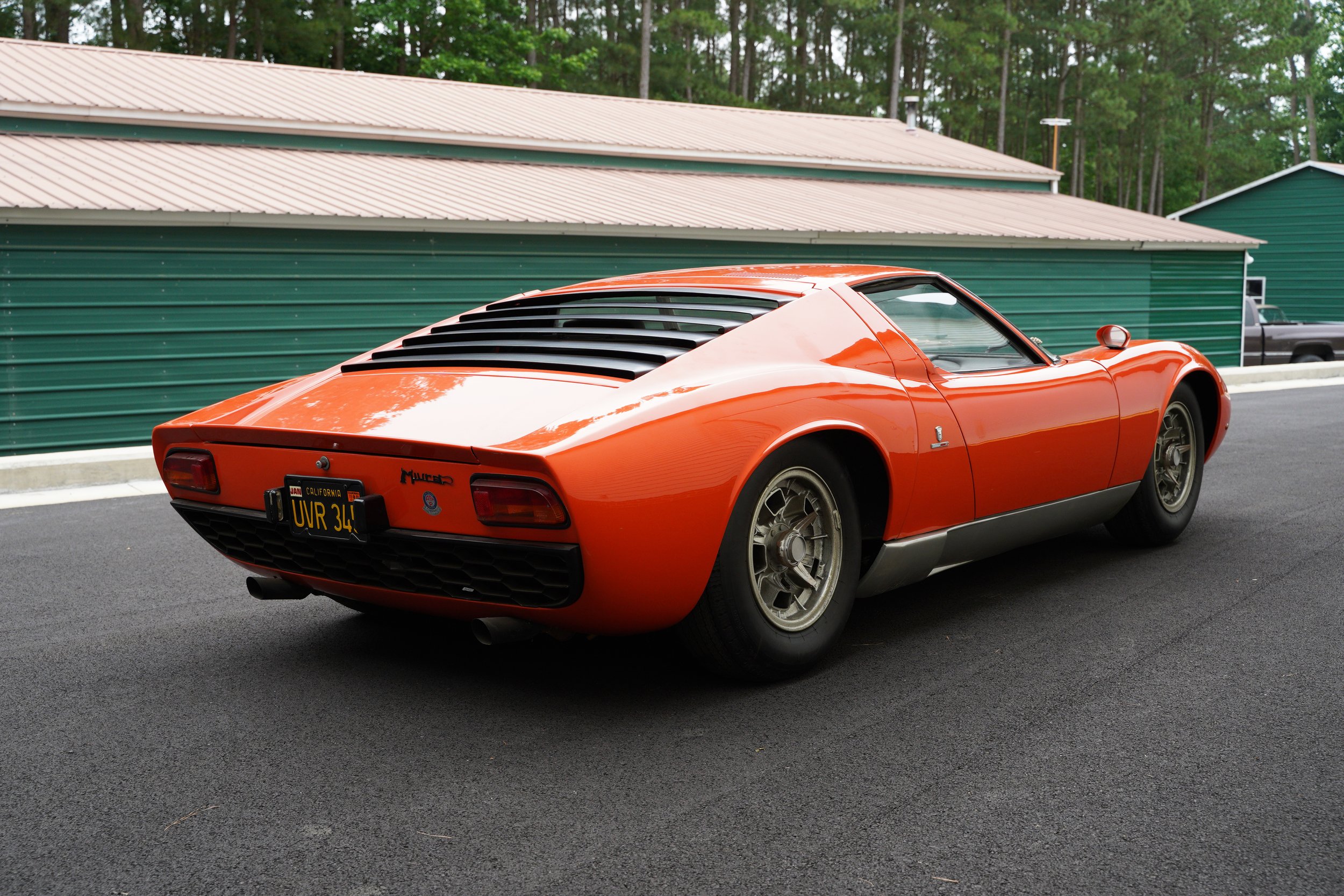
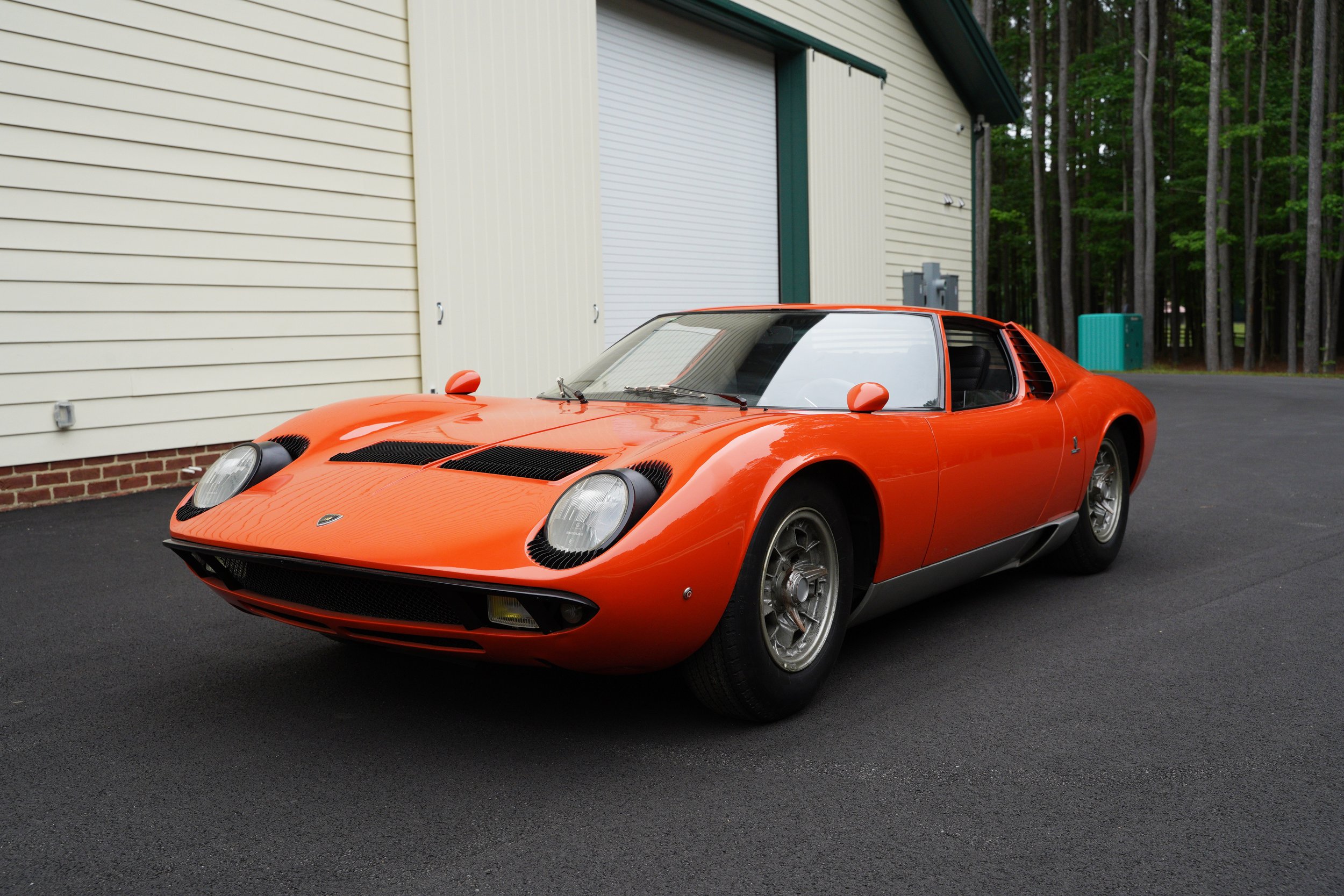
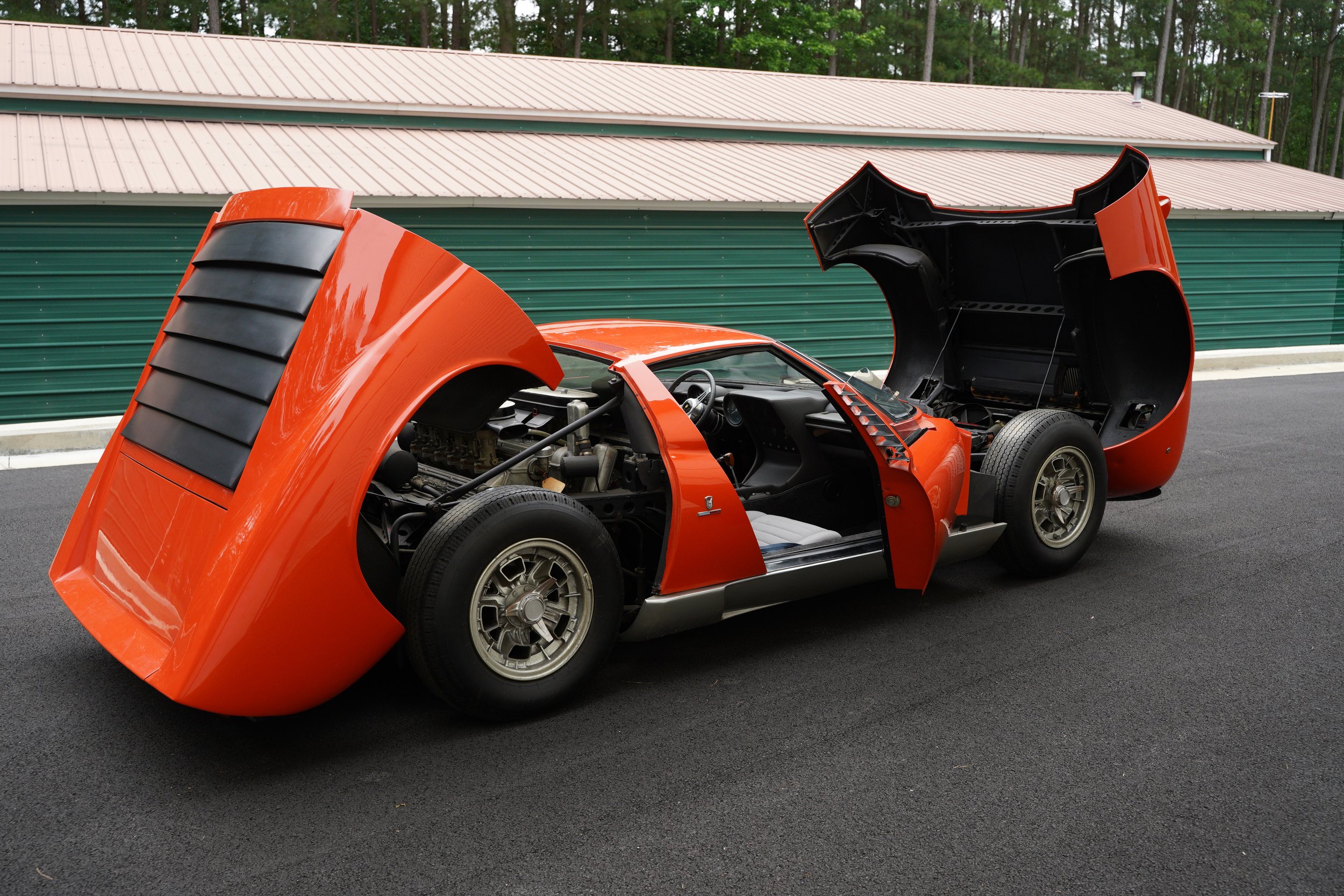
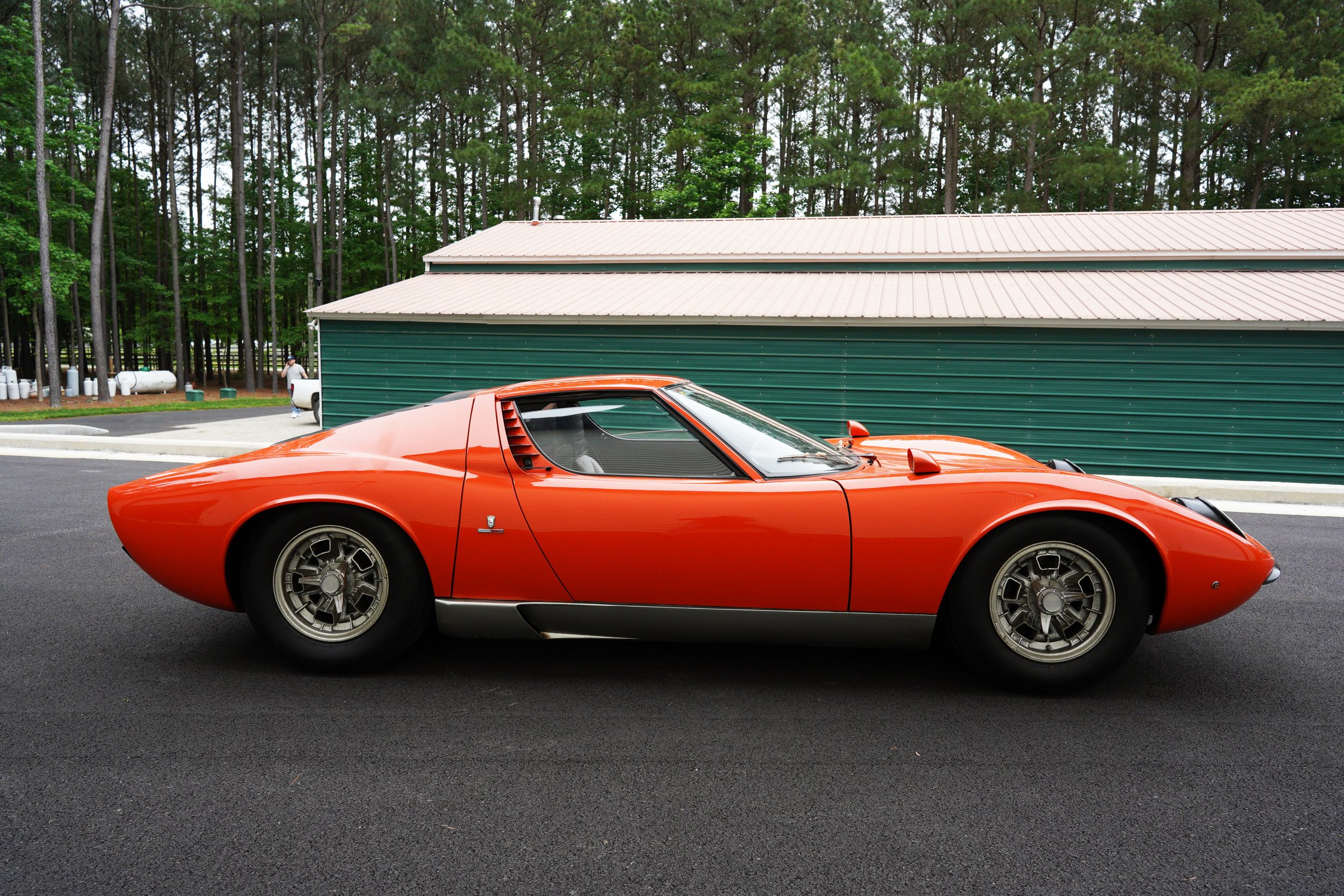
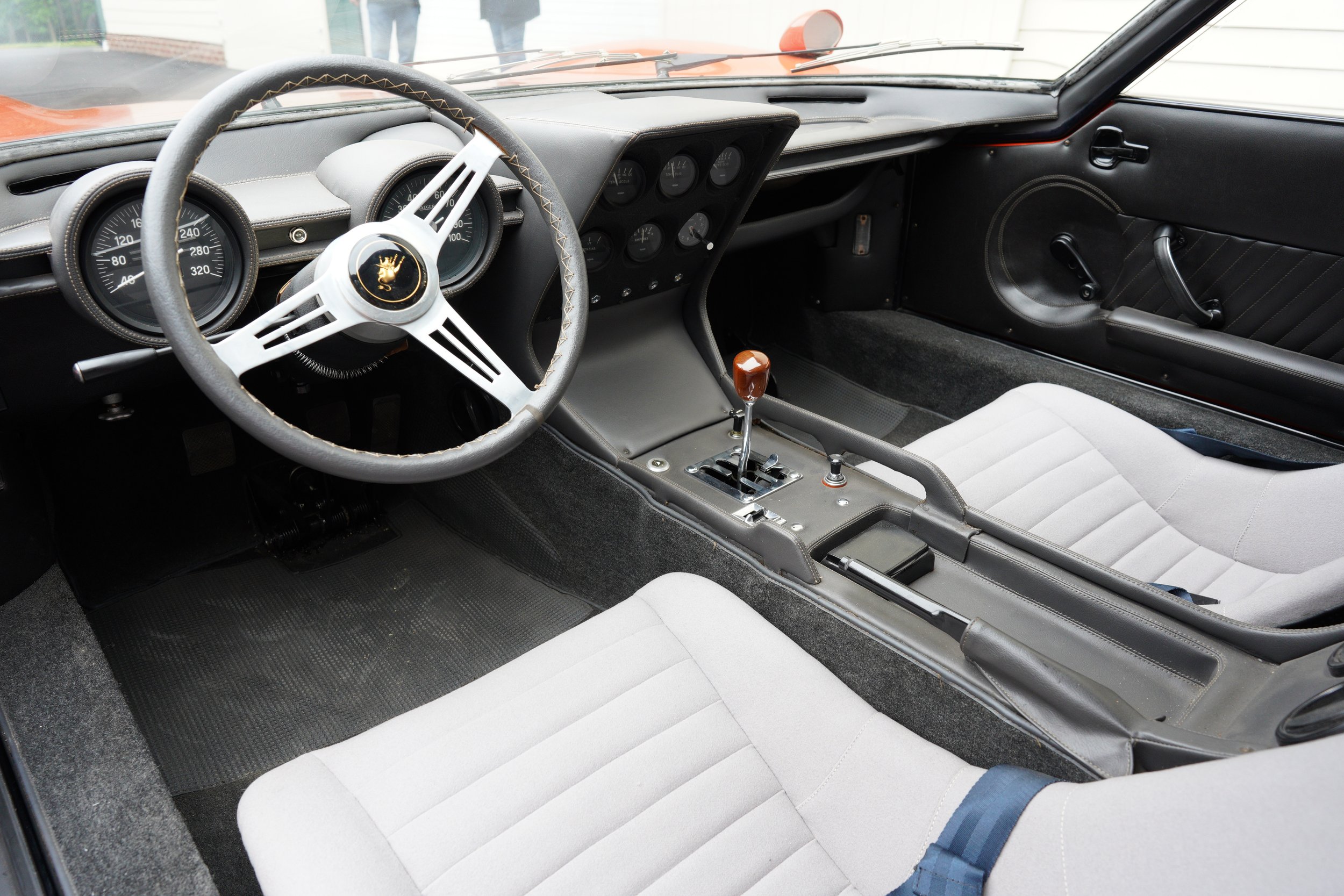
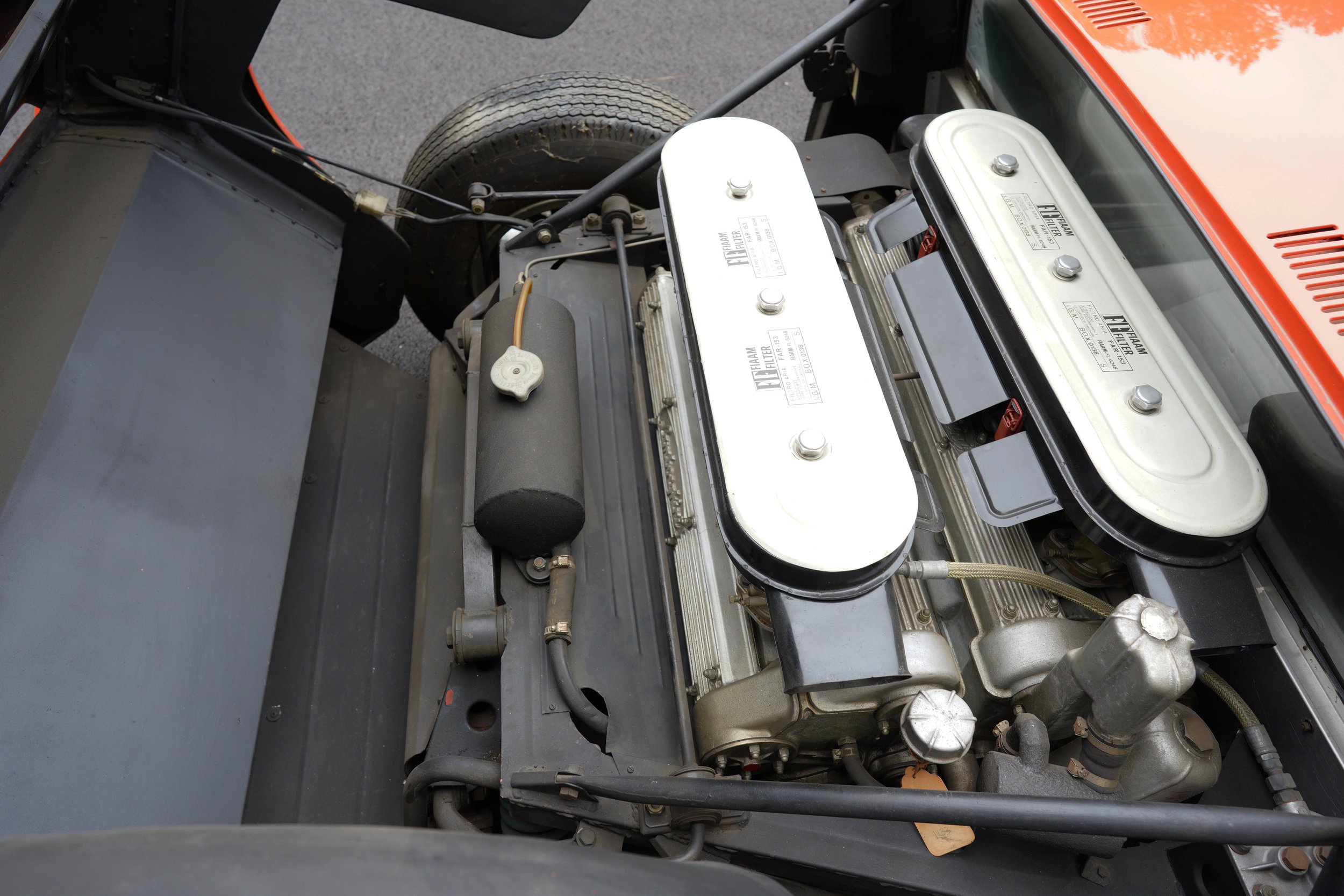
● Engineering – Brilliant chassis and transverse V12, with interconnected gearbox and differential in a waist-high package delivered racecar performance for the street.
+ Design – One of the most beautiful and iconic designs of the mid-20th century, the work of Giorgetto Giugiaro and Marcello Gandini.
= Passion – From the time it was introduced, it was a classic- considered by many the first modern supercar.
This stunning Miura was purchased new by Begovich in Rome in 1967. Through the years, Nick corresponded with the Lamborghini factory several times, saving all communications – and the car – until he passed away in 2020. The Miura was a staple piece in Lamborghini’s history, a beautiful blend of form and function which gained the company global recognition as one of the frontrunners in supercar production. Today this follows, as Lamborghini continues to build some of the most unique and bold designs in the supercar spectrum.
At the 1966 Geneva Auto Show, Lamborghini unveiled the Miura, a sleek mid-engine supercar designed by Bertone. Lamborghini’s symbol is derived from Ferruccio’s Zodiac sign, Taurus, or bull, which led to Lamborghini’s design and engineering inspiration for years to come. The Miura name derives from the Spanish fighting bull from the lineage of the Miura Cattle Ranch in Seville, Spain Nearly all Lamborghini’s since use a bull inspired name. When the doors of a Miura are opened, they resemble horns.
The Miura is certainly the faster car that Nick had in his stable, though Nick certainly didn’t overlook its sleek design, which is often referred to as one of the most iconic automobile designs of the 20th century.
The Miura’s aluminum body allowed the car to extremely aerodynamic and lightweight, weighing in at 2,848 lbs. Lamborghini decided to take the 4.0L Bizzarrini V12 from the front engine 400 GT and mount it transversely behind the driver for improved weight distribution. It produced over 350hp and was mated to a 5-speed gearbox that powered the rear wheels. The first concept had a plexiglass screen that covered the engine but was replaced with stylish louvers to keep water out and improve engine heat exhaust. The air intakes on side skirts of the car feed air into the rear brakes, whereas the air intakes behind the windows feed air into the four Weber carburetors. The doors, roof, and A-pillars of the car were made from steel for improved structural rigidity. The wheels were made from magnesium for strength and to reduce weight. The headlights of car were derived from the Fiat 850 and the design featured its distinctive eye lashes, which were removed in later model years.
For Begovich, this car is one of the most important combinations of engineering and design not only of the period, but of all time. Its timeless lines have a way of communicating the presence this car has hiding underneath, a potent V12 that earned the Miura a reputation of the world’s first legitimate supercar.
Miura Specifications:
Engine: 4.0L Bizzarrini V12
Horsepower: 370 @ 7700 RPM
Torque: 279 lb-ft @ 5500 RPM
Transmission: 5-Speed Manual
0-60 MPH: 6.3 seconds
Top speed: 174 mph
Weight: 2848 lbs













